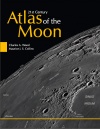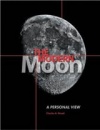|
|
| Line 1: |
Line 1: |
| | __NOTOC__ | | __NOTOC__ |
| − | =A Floorful of History= | + | =Anti-Sun Moon= |
| − | Originally published April 15, 2006 | + | Originally published April 17, 2006 |
| | <!-- Start of content --> | | <!-- Start of content --> |
| − | <div class="post" id="post-222"> | + | <div class="post" id="post-229"> |
| | | | |
| | <div class="storycontent"> | | <div class="storycontent"> |
| − | <p>[[File:Deslandres-Dench.jpg|Deslandres-Dench]]<br /> | + | <p>[[File:Full-Moon-2006-04-13_23-13-RAINER-LPOD.jpg|FullMoon-Rainer]]<br /> |
| − | Image by [mailto:daviddench@tiscali.co.uk David Dench]</p> | + | Image by [mailto:rsbfoto@rsfotografia.com Rainer Ehlert]</p> |
| − | <p>Deslandres (256 km diameter) is a large ancient impact structure whose floor has recorded much lunar history. The feature is ancient for its rim has been battered by Walter (in the 3 o’clock position), Lexell (6:00), Ball (7:30), and other unnamed craters. The floor contains one named crater, Hell at 9 o’clock, and many other craters, including the ghost of Hell immediately to its east. The ghost is just one of the older craters formed on an earlier floor of Deslandres and now mostly covered by later flows. The nature of this floor-covering material is uncertain. Because the floor doesn’t look dark at high sun it isn’t mare lavas. But as pointed out [[May_7,_2004|earlier]] its not obvious that the material is basin ejecta or lavas of some sort. But it is clear that some parts of the floors (Walter and two round spots to the west and a darkish area just inside Deslandres’ northern rim) are less rough and less cratered than the main floor. Multiple periods of floor covering have occurred at Deslandres, but we don’t know the details. And what is the source for the chain of 4-6 secondary craters at the 1:00 position?</p> | + | <p>Unlike the Sun, the Moon is full only once a month. Full Moon occurs when our natural satellite is on the opposite side of the sky from the Sun. Much to the disgust of deep sky observers and criminals the Full Moon bathes us in light all night. Sadly many lunar observers put away their telescopes thinking that without shadows there is little to see. But as Rainer’s lovely image illustrates the Full Moon is full of details. Most conspicuous are the bright rayed craters, especially Tycho (with its dark ring of impact melt), Copernicus, and the spotlight of Aristarchus. Also conspicuous are the differences in darkness of the maria. You can see with your naked eye that Tranquillitatis is darker than Imbrium. The most dramatic difference is the dark collar around much of [[August_27,_2004| Mare Serenitatis,]] but there are also strong contrast boundaries in Imbrium and western Frigoris/southern Procellarum. A closer view reveals tiny contrast differences such as the three patches of dark material - volcanic dark halo craters - on the floor of [[May_21,_2004| Alphonsus]], and the tiny ink drops (impact dark halo craters) near Theophilus and Copernicus. And have you seen the [[February_10,_2004| regional dark pyroclastic deposits]] just east of Sinus Aestuum, near Sulpicius Gallus and elsewhere? The Full Moon, and all the other phases, will surprise and delight if you look carefully. </p> |
| | <p>[mailto:tychocrater@yahoo.com Chuck Wood]</p> | | <p>[mailto:tychocrater@yahoo.com Chuck Wood]</p> |
| | <p><b>Technical Details:</b><br /> | | <p><b>Technical Details:</b><br /> |
| − | 6 April, 2006. 16″ Dob + 600 TV line video surveillance camera</p>
| + | 13 April 2006. TOA 130 at 750mm focal length + Infinity 2-2 CCD camera. Mosaic of 2 images </p> |
| | <p><b>Related Links:</b><br /> | | <p><b>Related Links:</b><br /> |
| − | Rükl plates 64 & 65<br /> | + | Rükl plates: all<br /> |
| − | [http://myweb.tiscali.co.uk/daviddench/ David’s website]<br /> | + | [http://www.rsfotografia.com/enter.html Rainer’s website]</p> |
| − | [[May_7,_2004|Another LPOD Deslandres]]</p>
| + | <p><b>Yesterday's LPOD:</b> [[September 6, 2025|Fold the Moon]] </p> |
| − | <p><b>Yesterday's LPOD:</b> [[September 6, 2025|Mystery Photo]] </p> | + | <p><b>Tomorrow's LPOD:</b> [[September 8, 2025|Restoring Bright Names]] </p> |
| − | <p><b>Tomorrow's LPOD:</b> [[September 8, 2025|Fold the Moon]] </p> | |
| | </div> | | </div> |
| | <p> </p> | | <p> </p> |




